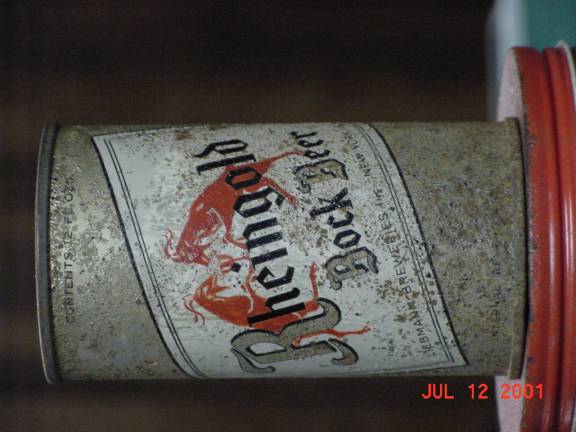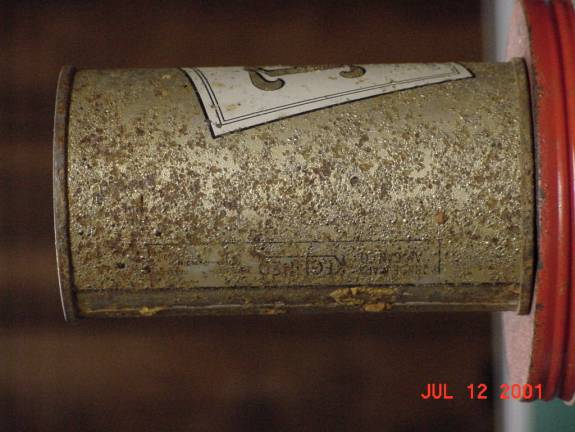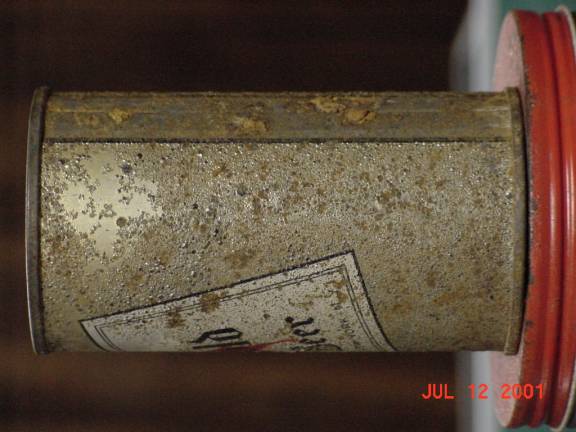
The Rheingold Bock Story
Prepared exclusively for greenmon.com by Jim Romine




I obtained this Rheingold Can from Ron Greenblatt during his nearly famous fire sale of his collection. It was the last can I purchased from him, and the last noteworthy Bock can he still owned. I had to contact the previous owner, before Ron, to get the details as to the finding of the can.
That gentleman traded for the can, obtaining it from the can’s original dumper. So, I am the fourth owner.
The original owner found this can in a resort hotel dump in the Catskills in either 1984 or 1985. In that same dump was a Rheingold Double Pale Bock, which now resides with another long – time collector’s widow. The dumper, who has since passed away, was never a BCCA member, and wasn’t really a collector. He just liked to hike through the woods and loved to find and dig dumps. He did this purely for relaxation, and to alleviate stress. Stress was a significant part of his life, as he was a warden at a New York State Prison.
He was very particular about the cans he brought out of a dump. No cans with holes qualified. Neither Rheingold Bock can had holes, but it is uncertain whether any holey versions of either can were found. The information I have is that they were both singles, but it can’t be verified. At present, this is the only known example of this particular variety. If any other examples are out there, I’d love to talk to the owner.
The can itself, as you can see from the photos, is a non–instructional, one label can. It says simply “Rheingold Bock Beer”, not “Double Pale” or “Pale”. It has a 40’s style lid on the top, with an early pressure bead, and a totally flat 30’s style bottom. It is a KEGLINED can, with the rectangle on the right side of the seam. It is a two-patent, others pending, version. The left side of the seam is blank. It says “Internal Revenue Tax Paid” across the bottom of the front. The gold color is washed out slightly on the front, as you can see in the photos, and at least one of the goats is touched up. The gold is brighter in person than the first photo shows. You can see that in the side profile shots. The first photo came out grayer than actual for some reason. I can’t really tell how much work has been done on the goats. No other colors appear to have been “enhanced”.
If anyone has any further information about this can, I’d love to hear it. I obtained it too late to make the new BCCA can book, mostly because I was afraid to ship it. It is very solid, no dents or weak spots, but I was too chicken to trust it to the mails. Hope you enjoy this look at one of my favorite cans in my collection.
_______________________________________________________
Below are some comments from Chris Richards on this can.
I have been trying to do a little research into the can but with my collection a good 1600 miles away it can be tough. The big kicker of that can is the long and dropped R. The fanciest of that design was pretty short lived with a span I think of 3 years max. I have dumped all versions of the Gold Rheingold in the Catskills downstate region including some I/O's. The "regular" R cans are much easier to find and ran up until the war or just before it. The Wood grain is by far the tougher as it changed labels at least 3 times in 3 years with the common everyday Rheingold label coming into effect around 47-48. I find the seam of the bock extremely odd with no other advertisements for Rheingold products and the 2 patents would put it around 38. This might be possible that it was sold alongside the double pale. The different lids run with the Kent Ale problems and make for a strange possibility that is made and never sold due to a problem and then filled WITH the double pales as one run being that the cans were similar. This can only makes me think more and more that there is a Liebmanns Bock out there. There were so many different Bock cans produced by Liebmann starting in 36 there can be no other conclusion. It seems now for every year up until the war they made a batch in a different container. The double pale I know of 2 different versions and the Pale bocks (black label) has a couple also. Throw this in and it completes the run. The Liebmanns were sold alongside Rheingolds for a very short time and seems to mostly been exported up north. The Liebmanns ales sold well in NE and I know of 4 pretty nice finds of 6-10 each. I would place this Rheingold Bock as being pre double bock and then being re-released. Another dump hopefully exists with both lids being 37-38 vintage and maybe even earlier. The Catskills in my opinion needs some west coast type detecting around stone walls. Every good prewar dump I found up there was always in rocks or next to a stone wall.